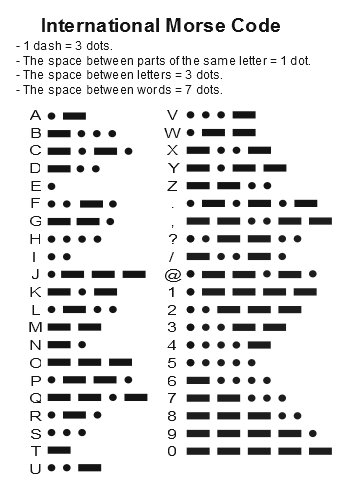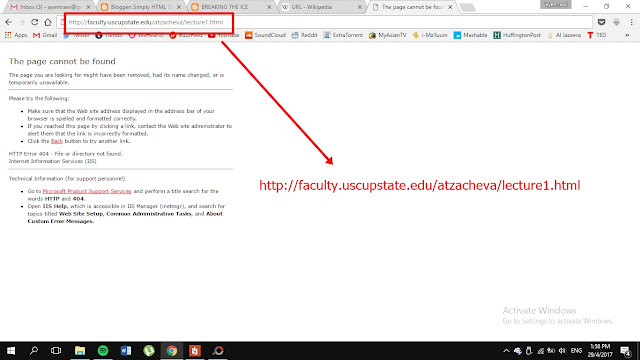VICTORIAN INTERNET
Hi there fellas!
In today's post, I'm gonna share with you what we have learned in our last class with Dr. Linda about the Victorian Internet. I suppose none of us are familiar with Victorian Internet, so here's some information about it.
Samuel Morse (and other inventors) developed the Victorian Intenet in the 1830s and 1840s. It is a telegraph revolutionized long-distance communication. It worked by relaying electric signals over a wire laid between stations.
Samuel Morse, he developed a code that bear under his name, Morse code, that assigned a set of dots and dashed to each letter of the English alphabet. This allow for the simple transmission of complex message across telegraph lines, which indirectly help to the inventing of the telegraph.
In 1844, Morse sent his first telegraph message, from Washington, D.C., to Baltimore, Maryland; by 1866, a telegraph line had been laid across the Atlantic Ocean from the U.S. to Europe. Although the telegraph had fallen out of widespread use by the start of the 21st century, replaced by the telephone, fax machine, and the Internet, it laid the groundwork for the communications revolution that led to those later innovations.
RISE AND DECLINE OF TELEGRAPH SYSTEM
Samuel Morse, he developed a code that bear under his name, Morse code, that assigned a set of dots and dashed to each letter of the English alphabet. This allow for the simple transmission of complex message across telegraph lines, which indirectly help to the inventing of the telegraph.
In 1844, Morse sent his first telegraph message, from Washington, D.C., to Baltimore, Maryland; by 1866, a telegraph line had been laid across the Atlantic Ocean from the U.S. to Europe. Although the telegraph had fallen out of widespread use by the start of the 21st century, replaced by the telephone, fax machine, and the Internet, it laid the groundwork for the communications revolution that led to those later innovations.
RISE AND DECLINE OF TELEGRAPH SYSTEM
In 1843, Morse and Vail received funding from the U.S. Congress to set up and test their telegraph system between Washington, D.C., and Baltimore, Maryland. On May 24, 1844, Morse sent Vail the historic first message: “What hath God wrought!” The telegraph system subsequently spread across America and the world, aided by further innovations. Among these improvements was the invention of good insulation for telegraph wires. The man behind this innovation was Ezra Cornell (1807-74), one of the founders of the university in New York that bears his name. Another improvement, by the famed inventor Thomas Alva Edison (1847-1931) in 1874, was the Quadruplex system, which allowed for four messages to be transmitted simultaneously using the same wire.
Use of the telegraph was quickly accepted by people eager for a faster and easier way of sending and receiving information. However, widespread and successful use of the device required a unified system of telegraph stations among which information could be transmitted. The Western Union Telegraphy Company, founded in part by Cornell, was at first only one of many such companies that developed around the new medium during the 1850s. By 1861, however, Western Union had laid the first transcontinental telegraph line, making it the first nationwide telegraph company. Telegraph systems spread across the world, as well. Extensive systems appeared across Europe by the later part of the 19th century, and by 1866 the first permanent telegraph cable had been successfully laid across the Atlantic Ocean; there were 40 such telegraph lines across the Atlantic by 1940.
The electric telegraph transformed how wars were fought and won and how journalists and newspapers conducted business. Rather than taking weeks to be delivered by horse-and-carriage mail carts, pieces of news could be exchanged between telegraph stations almost instantly. The telegraph also had a profound economic effect, allowing money to be “wired” across great distances.
Even by the end of the 19th century, however, new technologies began to emerge, many of them based on the same principles first developed for the telegraph system. In time, these new technologies would overshadow the telegraph, which would fall out of regular widespread usage. Although the telegraph has since been replaced by the even more convenient telephone, fax machine and Internet, its invention stands as a turning point in world history.
Samuel Morse died in New York City at the age of 80 on April 2, 1872.
Notes: We include a video that discuss about Victorian Internet for better understanding through visual.
Notes: We include a video that discuss about Victorian Internet for better understanding through visual.



Comments
Post a Comment